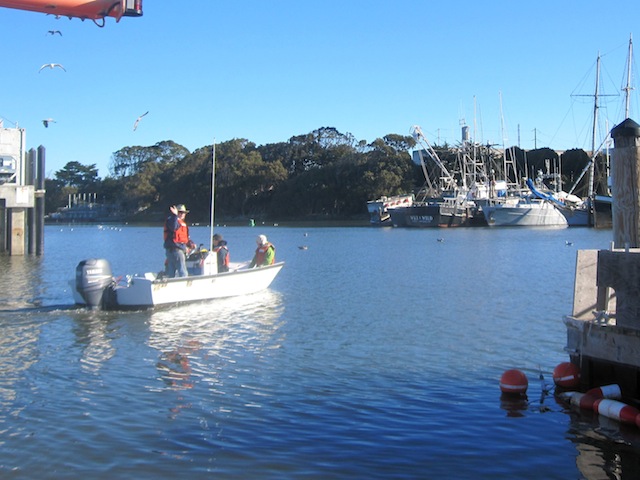By Stephanie Hughes, Vertebrate Ecology Lab

If marine mammals are deemed the “canary in the coal mine” for our oceans, how can we predict threats to oceans and human health if funds that support long-term monitoring of these sentinels are eliminated?
The importance of monitoring the health of marine mammals goes beyond our “good Samaritan” duties of saving the cute and cuddly. Rescue and recovery attempts don’t always result in a happy ending, even though we hope for the best outcome. Regardless, our efforts are never in vain, for even failed attempts present us with the opportunity to discover clues for how the animal lived, so we may (hopefully) reveal how and why it died. Responding to diseased, injured, distressed, and even deceased marine mammals is our gateway to unveiling what these animals, and even humans, may be up against as environmental conditions are in flux.
The Marine Mammal and Sea Turtle Stranding Response Network operates through the Vertebrate Ecology Laboratory (VEL) at Moss Landing Marine Laboratories (MLML) and is a participant of the National Marine Mammal Health and Stranding Response Program. The VEL-MLML stranding network has been in operation for over 20 years under the direction of Dr. Jim Harvey, professor and interim director of MLML. At its infancy, VEL-MLML stranding response, in collaboration with other stranding response organizations such as The Marine Mammal Center and Long Marine Laboratory, was conducted voluntarily. Students, faculty, and members of the community would volunteer for rescuing, recovering, or collecting data on live and deceased stranded marine mammals. During the early years, equipment for stranding response was limited, thereby making the sample collection and storage to support long-term research difficult, though not impossible. Volunteers often lacked proper transportation, sampling equipment, and protective gear, and many were without formal training on data or sample collection. Despite these shortcomings, dedicated volunteers would drag hundreds of pounds of dead, beached marine mammal heads, tails, flippers, etc. (yes, without latex gloves) through miles of sand dunes, then would strap their prized possession on top of their ’78 Toyota pick up, tails and flippers flapping in the wind on Highway 1 as they returned to the lab. During the early 1990s, the VEL-MLML stranding network had many willing, committed, and dedicated volunteers (still does). What it didn’t have were sufficient funds to support the infrastructure necessary for rapid, large scale, and long-term stranding response.





















